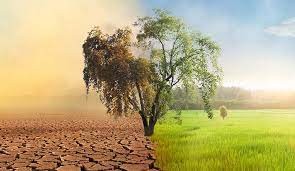
Over 1 billion children around the world are at extremely high risk of severe and destructive climate hazards according to various research. A recent report by UNICEF shows that children in 98 percent of African countries are at high or extremely high risk of the impacts of climate change.
They face multiple climate-related impacts such as severe drought and flooding, air pollution and water scarcity, leaving them vulnerable to malnutrition and disease. Almost every child on earth is exposed to at least one of these climate and environmental hazards.
These crises don’t affect all children equally. Children in the poorest communities bear the biggest burden. Additionally, children are affected more severely by climate change than adults. This is because children’s immune systems are still developing, leaving their rapidly growing bodies more sensitive to disease and pollution.
Children are less able to survive extreme weather events and are more susceptible to toxic chemicals, temperature changes, and diseases. Toward this end, 90 percent of diseases resulting from the climate crisis are likely to affect children under the age of five.
Climate change poses major threats to children, development health, nutrition, education, and future. For instance, the education of around 38 million children is disrupted each year by the climate crisis.
Extreme temperatures leave many families living in poverty with less food, less clean water, lower incomes, and worsening health.
Extreme events destroy homes, schools, childcare centers and infrastructure critical to children’s well-being. Droughts and flooding can destroy crops and cut access to clean water. Almost 160 million children are exposed to increasingly severe and prolonged droughts.
Additionally, the climate crisis is forcing families to migrate. By 2050, there could be 143 million more migrants due to the climate crisis.
Ground-level ozone and particulate matter are associated with increases in asthma and other respiratory conditions in children.
Additionally, it has the potential to increase outdoor air pollutants, such as dust from droughts, wildfire smoke, and ground-level ozone
Climate change directly and indirectly causes FGM, child marriages, teen pregnancies and child labour.
As a result climate crisis magnifies inequality, poverty, and displacement and may increase the likelihood of conflict.
It is projected that by 2050, a further 24 million children are projected to be undernourished as a result of the climate crisis. By 2040, it is estimated that one in four children will be living in areas with extreme water shortages.

Leave a Reply